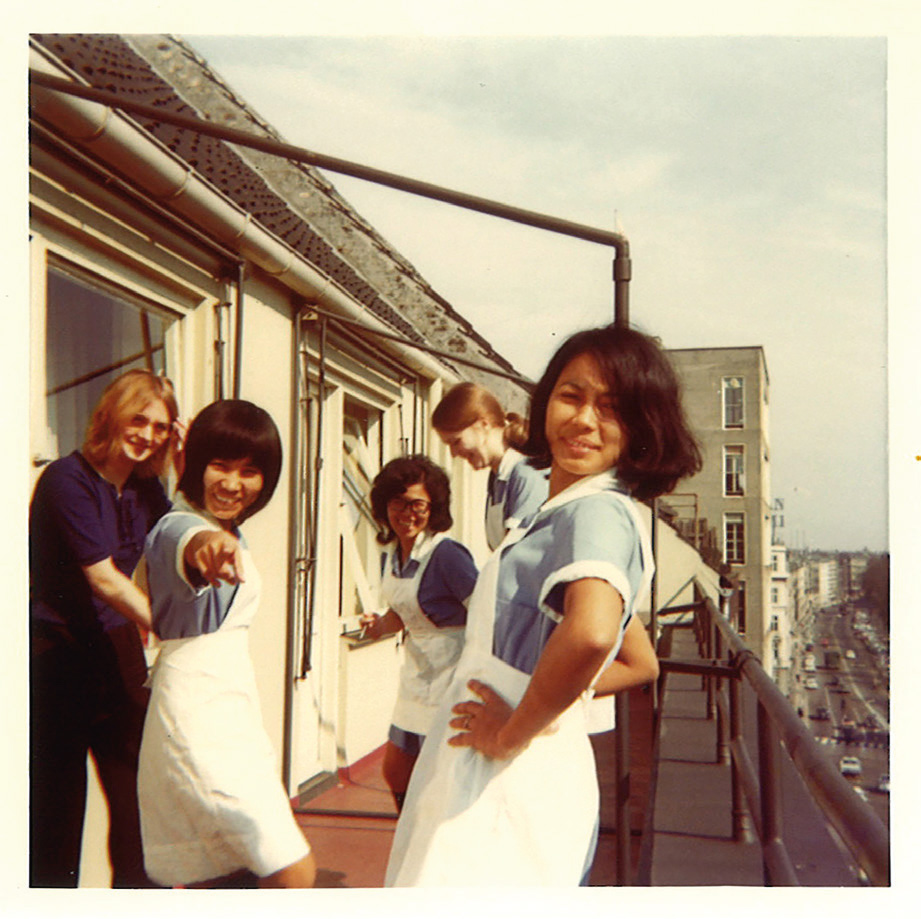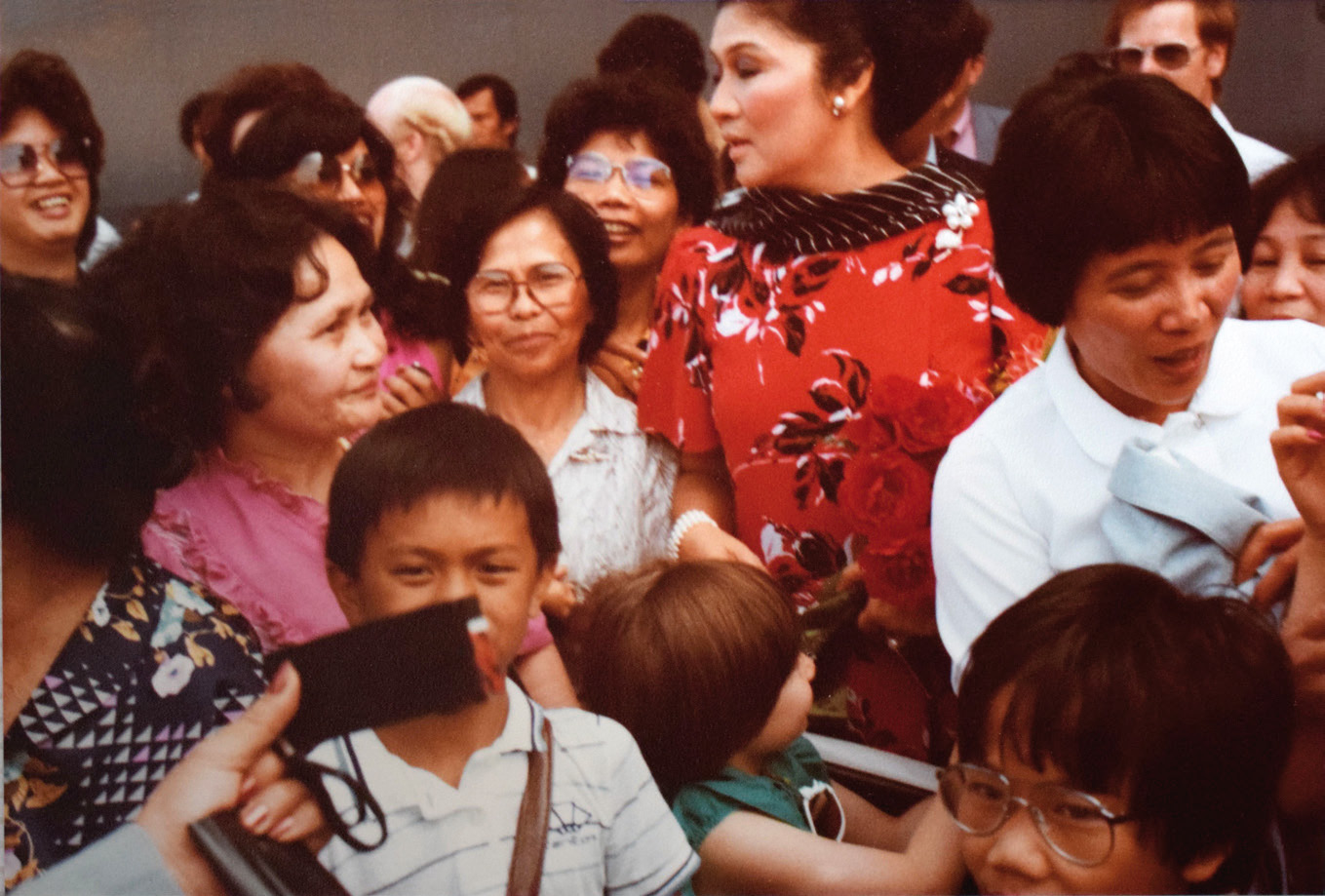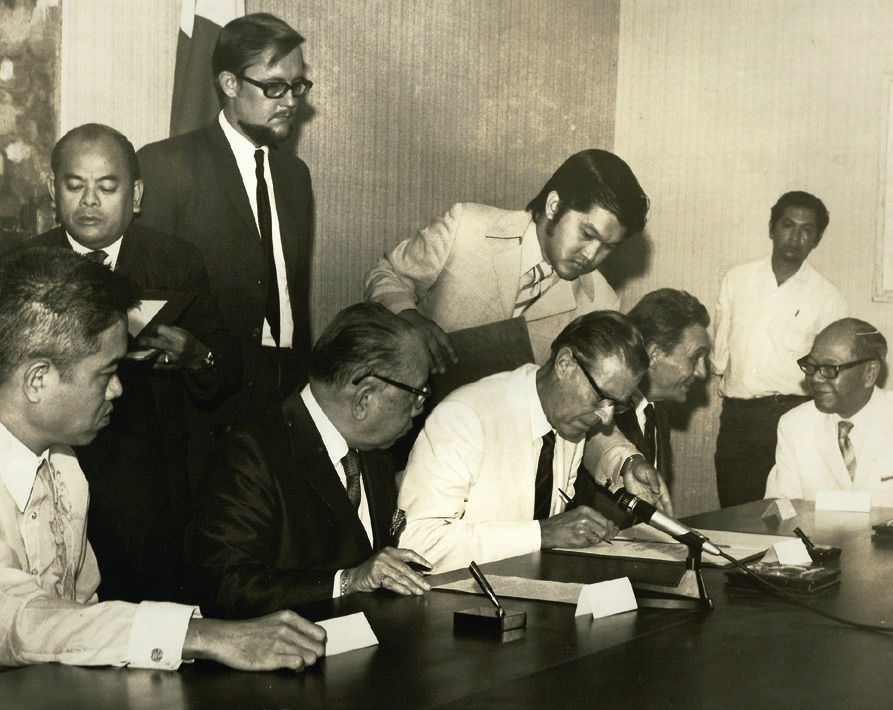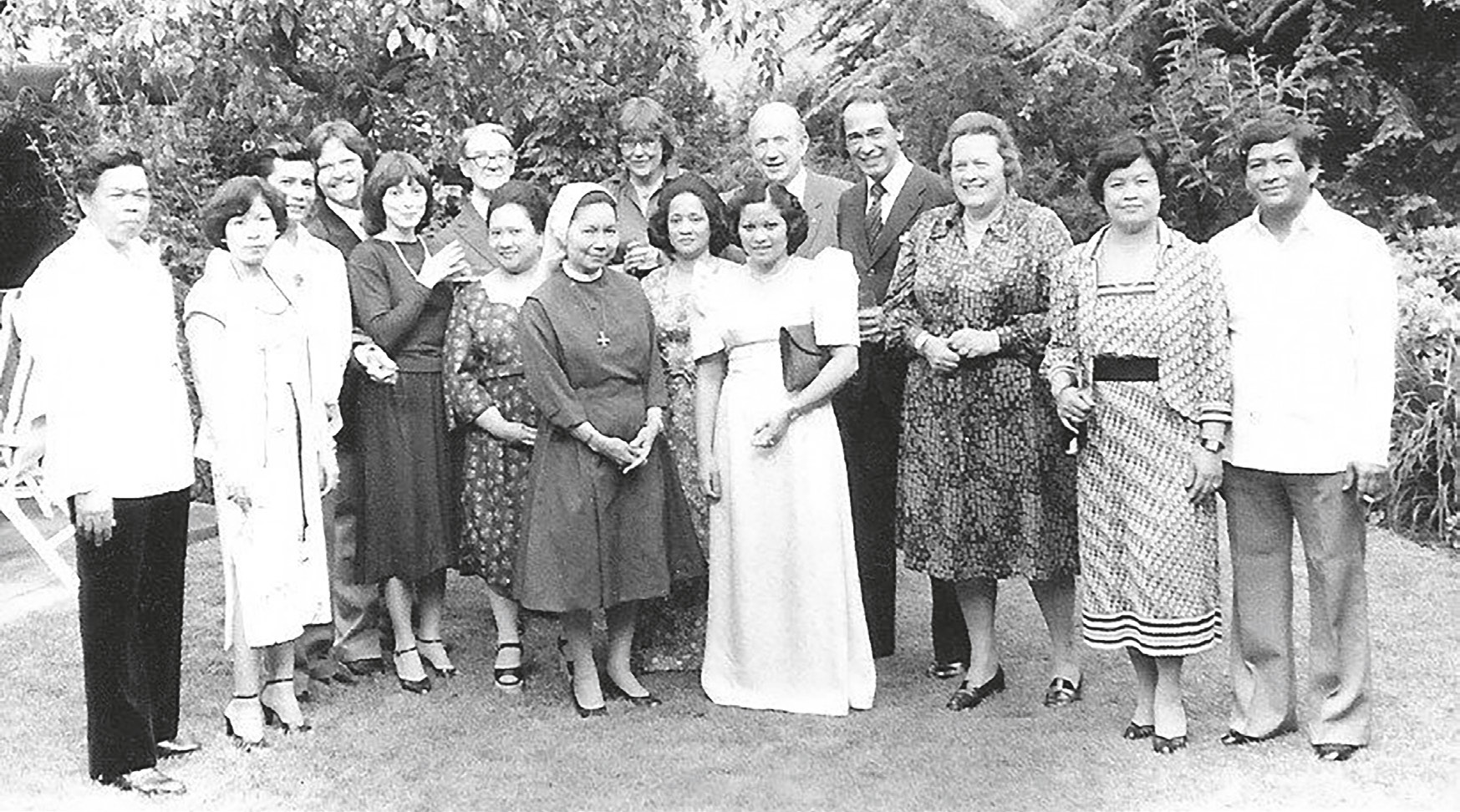Laboring pioneers and pioneers of labor export
The first batch of Filipino workers in Denmark arrived in the years 1960-1973 and thus prior to the formal institution of ‘labor export’ as a Philippine state policy in 1974. However, some of the Filipino Pioneers, as this generation calls themselves, were already facilitated by labor officials. Tracing their histories complicates and expands the dominant narrative of the emergence of the Philippines as a ‘labor brokering state’.
This essay is based on my book Labor Pioneers. Economy, Labor, and Migration in Filipino-Danish Relations, 1950-2015; a story told from the margins about events that changed the global economy, local labor market structures, and urban geographies during the second half of the 20th century. Through the lives of Filipinas recruited for chambermaid jobs in Copenhagen from the 1960s onwards, the emergence of transnational labor trading is traced. As a framework for understanding the economic, political, and social circuits that the Filipina chambermaids in Copenhagen became part of – and organized in response to – the architecture of international labor policies is unraveled along with local and transnational trade union strategies, association histories, and emergence of social and religious networks in Denmark, the Philippines, and in-between.
I focus here on the years surrounding the Philippine Labor Code of 1974; on the political visions, the pragmatic practices, and the bureaucratic logics that shaped the Philippine state’s experiences with labor brokerage to the world. The Labor Code of 1974 is widely known and referenced within migration studies, and at the same time its emergence and implementation are understudied and often misinterpreted. By asking questions from the margins of migration history – the recruitment of Filipinas for chambermaid jobs in Copenhagen in the 1960s and 1970s – new insights may be gained.
The Filipino Pioneers
Migration from the Philippines to Denmark has, schematically put, occurred in three major waves. The first arrivals between 1960-1973 – during the so-called ‘guest worker era’ of Europe – called themselves the Filipino Pioneers. This was before the Philippine government formally instituted labor export as a policy, which happened with the adoption of the Labor Code of 1974 under which the Overseas Employment Development Board (OEDB, today Philippine Overseas Employment Administration, POEA) was set up, but for some of the Filipino Pioneers their recruitment was indeed facilitated by labor officials.

Filipina and Danish chambermaids at Hotel Richmond, Copenhagen, 1972
I argue that the Labor Code of 1974 was not the beginning of state-managed labor export in the Philippines; rather it was the institutionalization and systematization of state practices that had been ongoing for decades. Furthermore, preparations and experiments with labor export that specifically led to the adoption of the Labor Code of 1974 predated the boost in demand for Filipino labor in the oil-producing countries in the Middle East – a demand which is often cited as the trigger of state brokered labor export in the Philippines. In fact, until 1976, the OEDB placed more workers in Europe than in the oil-rich Arab countries.1 Even if the OEDB from 1976 onwards deployed significantly more workers to countries such as Saudi Arabia than to Europe, at the time of preparing and implementing the Labor Code of 1974, it was to countries such as Denmark that Philippine officials supplied labor. Like other ‘guest workers’ in Europe at the time, the Filipino Pioneers were recruited by the manufacturing industry, but primarily they were hired for service jobs. In the case of Denmark particularly in Copenhagen hotels and Copenhagen Airport.
The second wave of migration from the Philippines to Denmark followed in a moderate but steady flow from the late 1970s to the 1990s. The post-1973 arrivals were largely employed in the same sector, often the same workplaces, as the Pioneers. Most obtained their residence permits through marriage to Danish citizens or permanent residents, since nearly all other legal options became unavailable with the so-called ‘immigration stop’ that was adopted in late 1973. The labor offered by the Philippines was still in demand worldwide, despite multiplying obstacles to legal migration.
The third wave of migrants from the Philippines to Denmark began in the late 1990s. The annual number of Philippine citizens entering Denmark rose remarkably from fewer than 200 to more than 2,000 by 2008.2 This mirrored a general trend in migration from the Philippines to Europe. Between 1998 and 2006 the official numbers of land-based deployed workers to Europe rose from around 15,000 to almost 60,000.3
Immigration stop and continued migration
In both Denmark and the Philippines, the year 1974 constitutes a monument in migration history. The Philippine government adopted the Labor Code that instituted labor export as a state policy and laid out the organizational foundations for state-brokering of labor migration. The Danish government conversely implemented new restrictions on immigration; from 1974 new work permits to third-country nationals were formally suspended, and so were work permits for relatives of migrants already employed in Denmark. Nonetheless, by the late 1970s, Denmark was still on the list of countries served by the OEDB. The immigration stop in Denmark and in many other European countries at this point in history – ending an era of active guest worker recruitment by private employers as well as states – was never a ‘stop’ but rather a reconfiguration of migration. Thus, Philippine officials remained active in Europe with ‘marketing missions’ of their new product: labor. As for the Philippine workers who kept arriving in Europe, including Denmark, the reconfiguration of migration through legal restrictions but continued recruitment rendered their laboring lives still more precarious.
Reconstructing the archive
The Filipino Pioneers migrated through a combination of individual initiative, targeted job postings, networks of local agents, systematic recruitment efforts of international hotel chains, chain migration dynamics, and facilitation from Philippine labor officials. One illustrative example of this is the group who became known as ‘The 49ers’. These 49 women were recruited directly in the Philippines at the request of the management of Hotel Scandinavia in Copenhagen – built as a joint venture between Scandinavian Airlines and the American-owned hotel chain Western International. The job interview sessions held in Manila were conducted by the HR manager of the Singaporean Shangri La Hotel – who was a former colleague of the American CEO, Mr. Ellis, who had been hired to run the Danish hotel. Some of the 49 women had been recommended for the job interview by relatives already working in Denmark, some had been tipped by local agents in their villages, and some were referred by the Philippine Department of Labor. When The 49ers left for Copenhagen with one-year contracts as chambermaids in November 1973 – shortly before the Danish immigration stop was adopted – they were accompanied by a Ms. Garcia from the Department of Labor in the Philippines (in the group photo taken prior to departure, Ms. Garcia is sitting next to the Danish staff manager, Axel Christiansen).
… they “created the
perfect distraction from
confronting problems
in the domestic
economy”.
Not many details of 1960s and 1970s state-managed labor export from the Philippines are provided in existing historical accounts, and many documents from this period have been lost or are inaccessible. The Philippine Department of Labor and Employment (DOLE), the Philippine Overseas Employment Administration (POEA), and the Philippine International Labor Affairs Bureau (ILAB) testify that they either have no or cannot locate the original sources from the enterprise of deploying workers abroad from the time before the late 1990s. Former labor officials who worked with labor export in the 1970s cite a policy of keeping such files for only five years, and thus not really archiving them.
The primary source material found from the 1960s to the 1990s has been scarce and consists primarily of Annual Reports and other published papers from the DOL/DOLE and the OEDB. Minutes from board meetings, records of training programs, reports from labor attachés stationed in Europa, or material from ‘marketing missions’ in Europe, for instance, have so far been impossible to locate. The ILAB might in fact have some files dating back to the 1960s, but not ‘organized and recorded’, and it has so far not been possible to gain access to the non-organized part of the archive.
Since the archives of private individuals, of state institutions and civil society organizations in Denmark and the Philippines only hold fragmented pieces of the history of how labor export emerged as a state policy in the Philippines, much relies on secondary sources and not least oral history. A main part of the empirical material for my inquiry consists of formal interviews and informal conversations with various groups of informants: migrants in Denmark and their relatives still residing in the Philippines, trade unionists in Denmark who were engaged in the organizing of Filipino workers, and (former) labor officials in the Philippines (primarily those involved in labor export in the 1970s).
Labor as stock, surplus, and export
Prior to the Labor Code of 1974, labor attachés were assigned to locations where Filipinos had for decades been deployed to service primarily American employers, such as Guam, Honolulu, and San Francisco. In 1956, The Manila Employment Office was established, tasked with managing and stabilizing the employment situation of the country, including encouraging domestic as well as overseas migration, and as a parallel structure the Overseas and Fee-charging Employment Agencies Unit was created. During the Vietnam War, Filipino construction workers and technicians were recruited to build and maintain the infrastructure of American military camps and bases in Guam, Thailand, and Vietnam. Among those who went to Vietnam as civilian workers during the war was the mother of Christina Santos Madsen, who later herself followed the migration-for-work tradition of her family, when she went to Denmark as part of The 49ers.
From 1970, Philippine labor attachés were deployed to new destinations such as Canada, and countries in Africa and Europe, more specifically West Germany and the Netherlands, and a Philippine labor attaché in Geneva worked closely with the International Labour Organization.4 In West Germany the labor attaché office was opened in response to particularly a demand for Philippine nurses, says Jose Brillantes, who later in the 1970s was stationed as labor attaché in Bonn, where he also had responsibility for the Scandinavian countries.5
State-organized training programs had also been put in place to facilitate ‘emigration’ within targeted professions. The ‘yearly output’ of those trainings was monitored by the Department of Labor, which had by then begun speaking about the workforce in terms of ‘stock’, ‘surplus’, and ‘exportation’, and in 1973 noted that foreign employers – including from Denmark – increasingly “preferred to hire through the public employment offices”.6 Between 1970 and 1973 it was particularly the temporary overseas contract work that expanded, as opposed to prior overseas labor flows of which the majority had been permanent migration. The monthly newsletter Overseas Employment Trends was introduced to analyze the outflow. Many of those who left the Philippines as contract workers ended up re-contracting while abroad; some of them eventually becoming permanent emigrants.
The ties between Denmark and the Philippines were also strengthened during these years. In 1969 the Danish consulate moved its office to the compound in Intramuros where the Department of Labor was located, and in 1971 Denmark tripled its official representation in Manila. Hjalmar Ibsen, who was appointed Consul General for the Philippines in Denmark in 1966, wrote in his memoir that it was a time when Denmark had a labor shortage and actively encouraged foreign workers to come to Denmark. “The Philippines sent a large contingent”, Ibsen wrote, so much so that soon one would encounter Filipinas in “practically every hotel”.
What changed with the 1974 Labor Code was not the actual endeavor of state engagement in sending workers abroad, but the scale in numbers, the degree of institutionalization, and the political priority given not just to labor export but also to the Department of Labor as such, headed by the influential minister Blas F. Ople, one of President Ferdinand Marcos’s most loyal allies.
The man with the vision
The labor officials who were involved in OEDB in the first years of its existence unanimously point to Ople as the man with the vision of how prominent labor export could become in the Philippine economy. Indeed, Ople got to work on these prospects immediately after taking office in 1967. By 1970, the Philippine state had signed contracts with several African states – for instance Kenya, Ethiopia, and Sudan – to provide middle- and high-skilled workers for the educational sector, population programs, well-digging, etc., and between 1969 and 1971 Filipinos were deployed to at least 25 different countries, though 80 percent of them still went to Guam or South Vietnam.7 When the Vietnam War ended in 1975, many Filipino construction workers followed their employers to construction sites in the Middle East,8 and thus the mass deployment of workers from the Philippines to this part of the world was also connected to events outside of domestic Philippine politics, rather than a mere cause or effect of the Labor Code of 1974.

Presidential wife Imelda Marcos (red dress) received by Filipinos in Denmark, July 1983, at inauguration of the training ship MS Filipinas, given as a ‘gift’ from the Danish state to the Philippines.
By the summer of 1971, Labor Secretary Ople and his department had worked out an interim set of policies, rules, and regulations for a systematic overseas labor program. This prepared the ground for the first big jump in scale that occurred between 1971 and 1973, when the number of registered contract workers placed abroad went up from a few thousand annually to more than 14,000 in 1972 and more than 36,000 the following year (not counting those who migrated by their own efforts or through private agencies).9
Manolo Abella, who worked in the Board of Investments and later Department of Labor in the 1970s, describes Labor Minister Ople as “the one who really saw the larger picture and the looming opportunities” in labor export.10 Marcos gave Ople the freedom to totally reorganize the Labor Department; Ople fired dozens of officials and instead recruited young people straight from university. Many of them were leftists, and some of them involved in the resistance against Marcos and Martial Law, but they eyed an opportunity to contribute to creating decent jobs for their compatriots. However, most of these jobs would be overseas, and often not that decent.

Signing of state loan agreement from Denmark to the Philippines, initiated under the Social Democratic government in the late 1960s.
One of the new recruits was Maria Alcestis Abrera-Mangahas, who became an officer in the Placement Department of the OEDB from its creation in 1974, and from 1978 Deputy Executive Director. “Ople was a visionary, I’ve never seen anyone like him before or after. So much was going on at that moment”, says Alcestis Abrera-Mangahas, forty years later.11 “He opened the minds of young people, brought us in and gave us senior positions, trusting our capacities. It was heady, intense, and exciting in those days”, she recalls. Abrera-Mangahas was from the outset what could be called a critical supporter of the ‘labor for migration’ strategy of the Philippine state: “We had to keep asking ourselves: Do we want to shape this thing, or do we want to stay out? I think we did right to stay in. But true enough, it morphed into a huge business”. The labor officials transforming labor migration into a state export enterprise actively “changed the market by boosting demand for Filipino manpower”, Abrera-Mangahas says, and they “created the perfect distraction from confronting problems in the domestic economy”.
Reinterpreting from the margins
In Europe, from the 1960s onwards, Filipinos were recruited mainly for the healthcare and the service sectors – in the latter case often for so-called unskilled work, even if many of the migrants had formal education. Already by 1976, the global – and not least European – demand for Filipino service workers was so great that the OEDB created a special branch to “organize an effective recruitment and placement program” for this worker category: The Household and Service Workers’ Unit.12
This part of migration history has been marginalized in the accounts of how the Philippine state shaped its labor export policies, as a result of several factors, not least a gendered bias in research. For example, male workers in construction and manufacturing – such as those recruited for the oil-producing Arab states from the mid-1970s – have been paid more attention in both labor history and migration history than women workers in the service sector. Thus, the early labor migrations from the Philippines to Europe were understudied, despite the fact that Europe was the destination of one in every four Philippine temporary migrant worker in 1975.13

Filipino Association of Denmark (FAD) receives Philippine ambassador to London, Jose Manuel Stilianopoulos, at the house of General Consul for the Philippines in Denmark, Hjalmar Ibsen. In front row Sister Pilar, who in the late 1970s was sent from the Philippines to Denmark to assist in the religious care of the growing Filipino community.
In the case of Denmark, women from the outset made up the majority of migrants from the Philippines, and they were first and foremost recruited for a particularly hidden form of service labor, namely chambermaid jobs; labor that is explicitly supposed to go unnoticed. In the book Labor Pioneers, these women – their life stories, their work experiences, their organizing practices, and their translocal networks – are at the center. From the narratives that emerge from tracing these working women at the margins or outside existing historical accounts, transnational labor trading policies, labor market structures, and labor unionizing histories are reinterpreted.
Nina Trige Andersen, Society for Labor History (SFAH). Author of Labor Pioneers. Economy, Labor, and Migration in Filipino-Danish Relations, 1950-2015, Ateneo de Manila University Press, 2019; and ‘Organizing Against all Odds. Filipina Chambermaids in Copenhagen 1970s-1990s’, Women’s History Review, 2020 (forthcoming) nina.trige.andersen@gmail.com; www.filippinernesdanmarkshistorie.dk